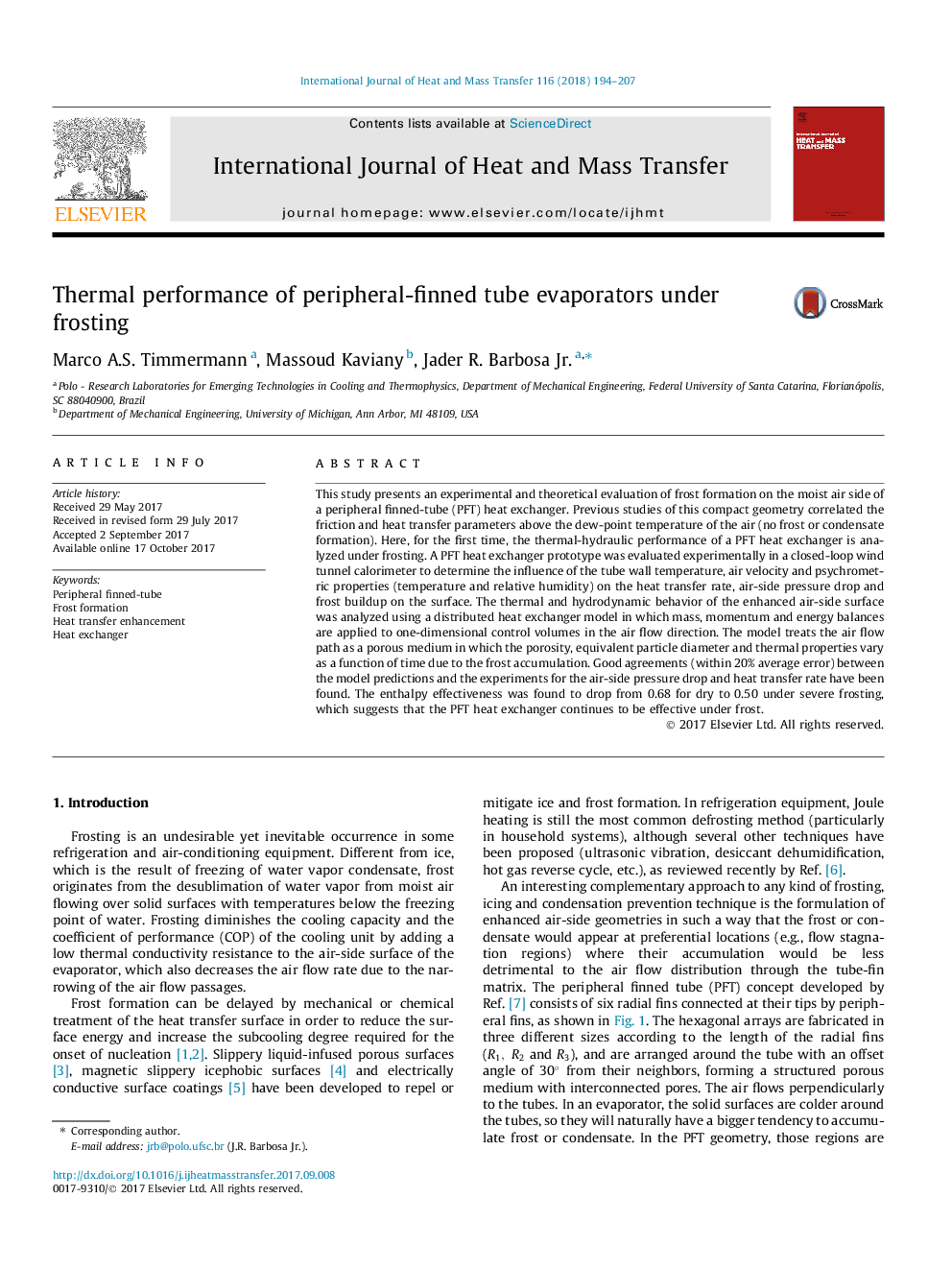| Article ID | Journal | Published Year | Pages | File Type |
|---|---|---|---|---|
| 4993754 | International Journal of Heat and Mass Transfer | 2018 | 14 Pages |
Abstract
This study presents an experimental and theoretical evaluation of frost formation on the moist air side of a peripheral finned-tube (PFT) heat exchanger. Previous studies of this compact geometry correlated the friction and heat transfer parameters above the dew-point temperature of the air (no frost or condensate formation). Here, for the first time, the thermal-hydraulic performance of a PFT heat exchanger is analyzed under frosting. A PFT heat exchanger prototype was evaluated experimentally in a closed-loop wind tunnel calorimeter to determine the influence of the tube wall temperature, air velocity and psychrometric properties (temperature and relative humidity) on the heat transfer rate, air-side pressure drop and frost buildup on the surface. The thermal and hydrodynamic behavior of the enhanced air-side surface was analyzed using a distributed heat exchanger model in which mass, momentum and energy balances are applied to one-dimensional control volumes in the air flow direction. The model treats the air flow path as a porous medium in which the porosity, equivalent particle diameter and thermal properties vary as a function of time due to the frost accumulation. Good agreements (within 20% average error) between the model predictions and the experiments for the air-side pressure drop and heat transfer rate have been found. The enthalpy effectiveness was found to drop from 0.68 for dry to 0.50 under severe frosting, which suggests that the PFT heat exchanger continues to be effective under frost.
Related Topics
Physical Sciences and Engineering
Chemical Engineering
Fluid Flow and Transfer Processes
Authors
Marco A.S. Timmermann, Massoud Kaviany, Jader R. Jr.,
